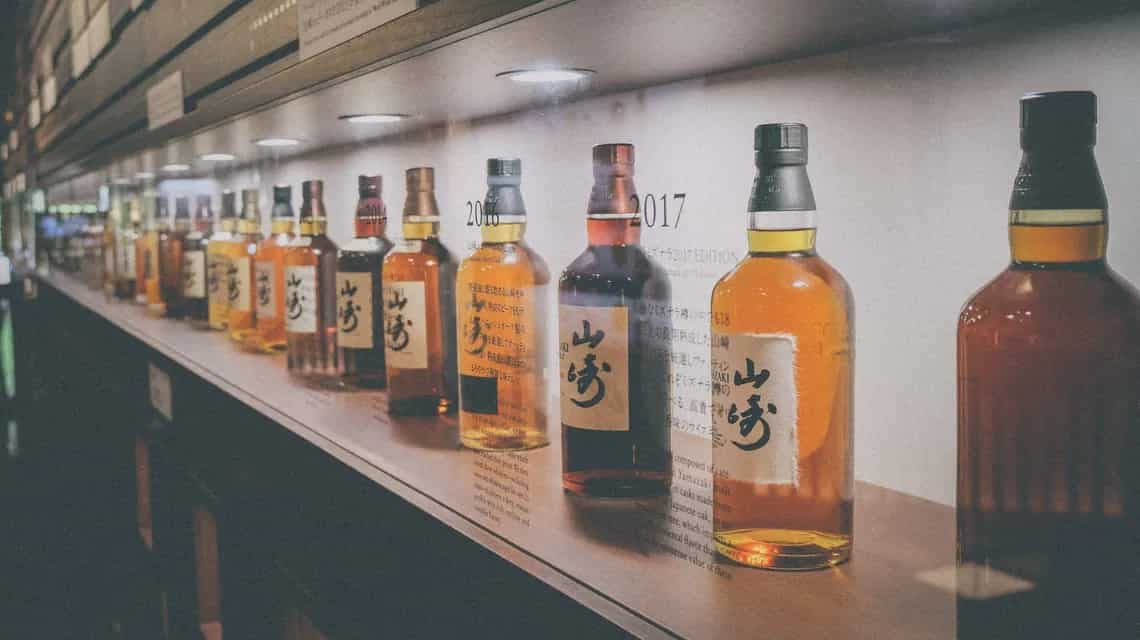Nature’s abundance, its ephemerality and diversity are sources of inspiration for the Japanese. Blessed with gifts such as deep forests, lush greenery and steep mountains, the Japanese feel nature is their guiding force. In every drop of Japanese whisky, there lives this unique sensibility and respect for nature. The art of whisky making in Japan, which began in 1923 with the Yamazaki distillery—the country’s first and oldest malt whisky distillery—was heavily inspired by the magnificence of nature and the subtleties of changing seasons. Nestled on the periphery of Kyoto, the success and superiority of this region’s whisky can be attributed to its terrain and climate; the convergence of three rivers Katsura, Uji and Kizu outside the distillery gives the area a humid climate, somewhat similar to that of Scotland. Formally referred to as ‘Minaseno’, the diversity of the temperature and humidity of this region, with very hot and humid summers as well as very cold and dry winters, create the unique conditions for whisky maturation and cask-aging, making it the birthplace of Japanese whisky as we know it today.
Fine Japanese craftsmanship
The art of whisky making must always follow the art of nature. The Japanese believe that spirits reside within every element of nature; from pebbles, raindrops to seeds. The everchanging seasons in Japan breathe life into its whisky; as temperatures and humidity fluctuate throughout the four seasons, the aging and cask ‘breathing’ process gets enriched. Japanese whisky is, therefore, a fusion of the delicate forces of the country’s natural gifts combined with the passion and precision of the best artisans. Japanese artisans, in their uncompromising pursuit of taste, continue their efforts to heighten the beauty and spirit that lives within each ingredient. They acknowledge that their art can only be as great as the intrinsic richness of each ingredient and so, there is a certain amount of humility with which they carry out their whisky making process, whether it is the blending or distillation. At every stage, it is this relationship between their craft, nature and humility that inspires them to create the best. This passion and precision of Japanese craftsmanship reflects in the taste, blend, and quality of their whisky, which is a product of their quest for perfection.
Symphony of flavours
The character and flavour profile of whisky is influenced by its country of origin, the regional climatic differences, ingredients available and the fermentation and maturation processes. The roots of Japanese whisky are deeply seated in the Scotch whisky making process that uses barley as the main grain. However, Japan’s unique climate and nature, along with varied processes such as fermentation in wooden or stainless-steel tanks and maturation in different types of oak barrels like wine casks, sherry casks, bourbon barrels, mizunara (Japanese oak), have lent Japanese whisky a unique distinctiveness, which is not only deep and mature but well-balanced and complex. In addition to the traditional craftsmanship, new innovations such as the use of different distilling malts and yeast, and installing pot stills of different sizes and shapes contribute to the diversity of the flavour profile of Japanese whiskies. In Japan, the aim is to ensure the highest quality of blends and therefore, the whiskies embody the philosophy of monozukuri craftsmanship: a relentless pursuit of perfection, meticulous attention to detail and commitment to quality.
A global phenomenon
In the last decade, Japanese whisky has created international appeal and luckily achieved global recognition stemming from its quality. With meticulous attention to detail, restraint, and elegance, it has consistently enamoured whisky connoisseurs from all over the world. Consumers who earlier pivoted towards Scotch Whiskies, Bourbon, or Irish Whiskeys, have displayed a strong sense of openness to engage and experiment with such premium spirits now. I’ve been informed that especially in India, as the alco-bev industry evolves rapidly and the consumer knowledge and repertoire expand, there is a gradual shift towards premiumization and superior quality spirits. At-home drinking has picked up, and it seems consumers are also trying their hand at mixology. They understand the nuances to best enjoy Japanese whisky - whether it is a chilled highball that brings out the inherent flavor and fullness of the tipple, or drinking it neat and savoring it at leisure while relishing the aromas.
Mr. Shinji Fukuyo is the chief blender at Suntory, Japan


